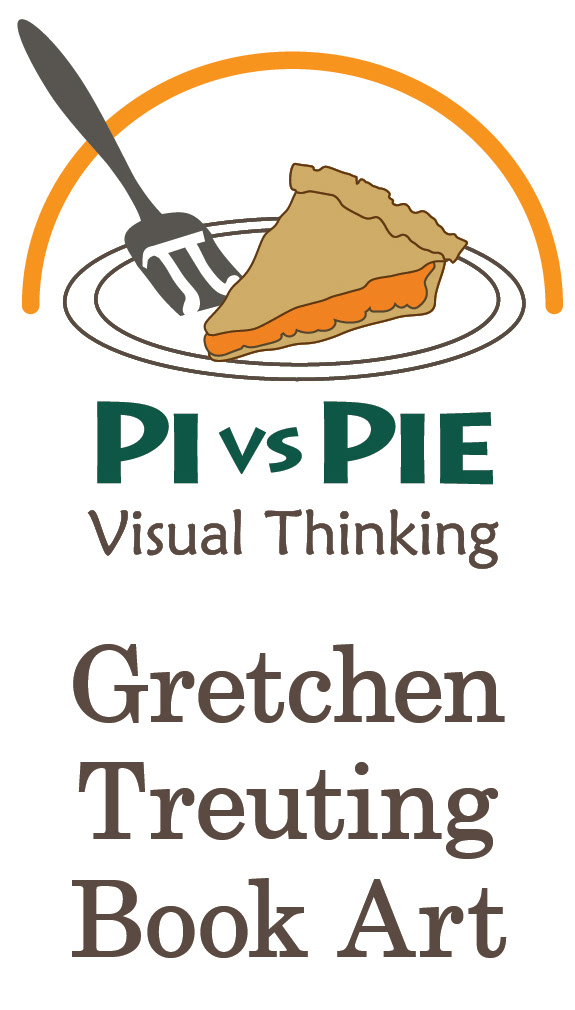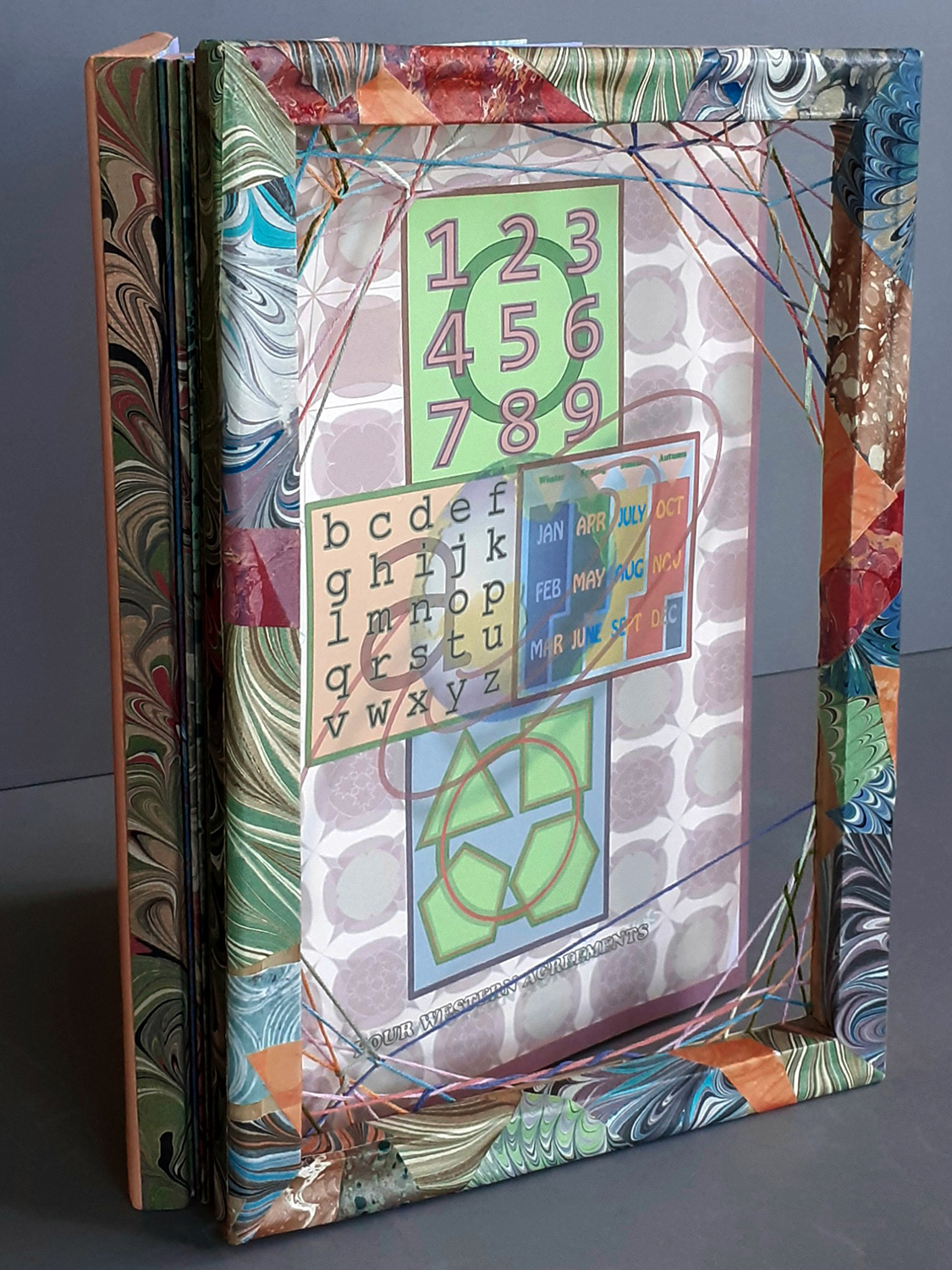
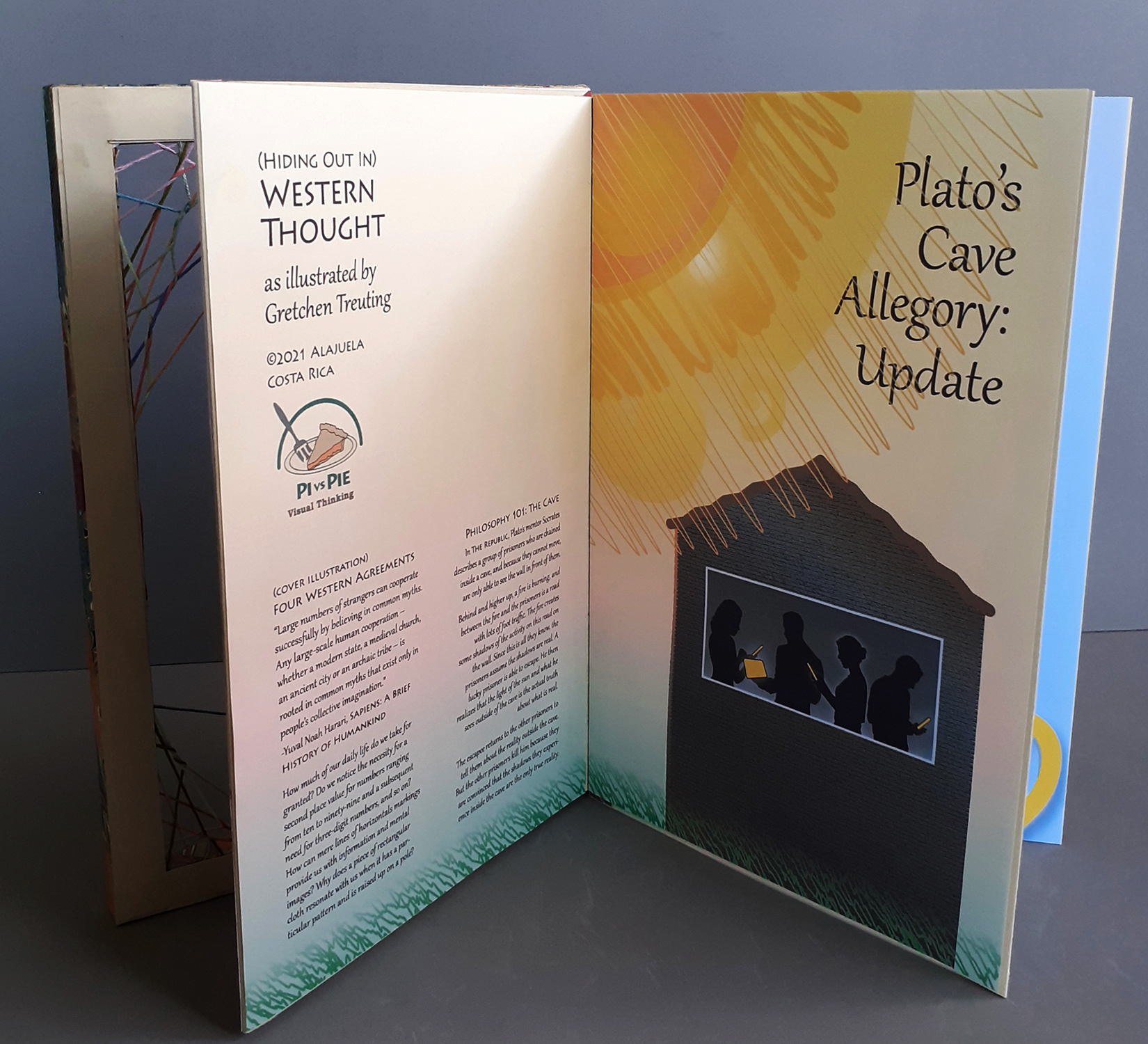
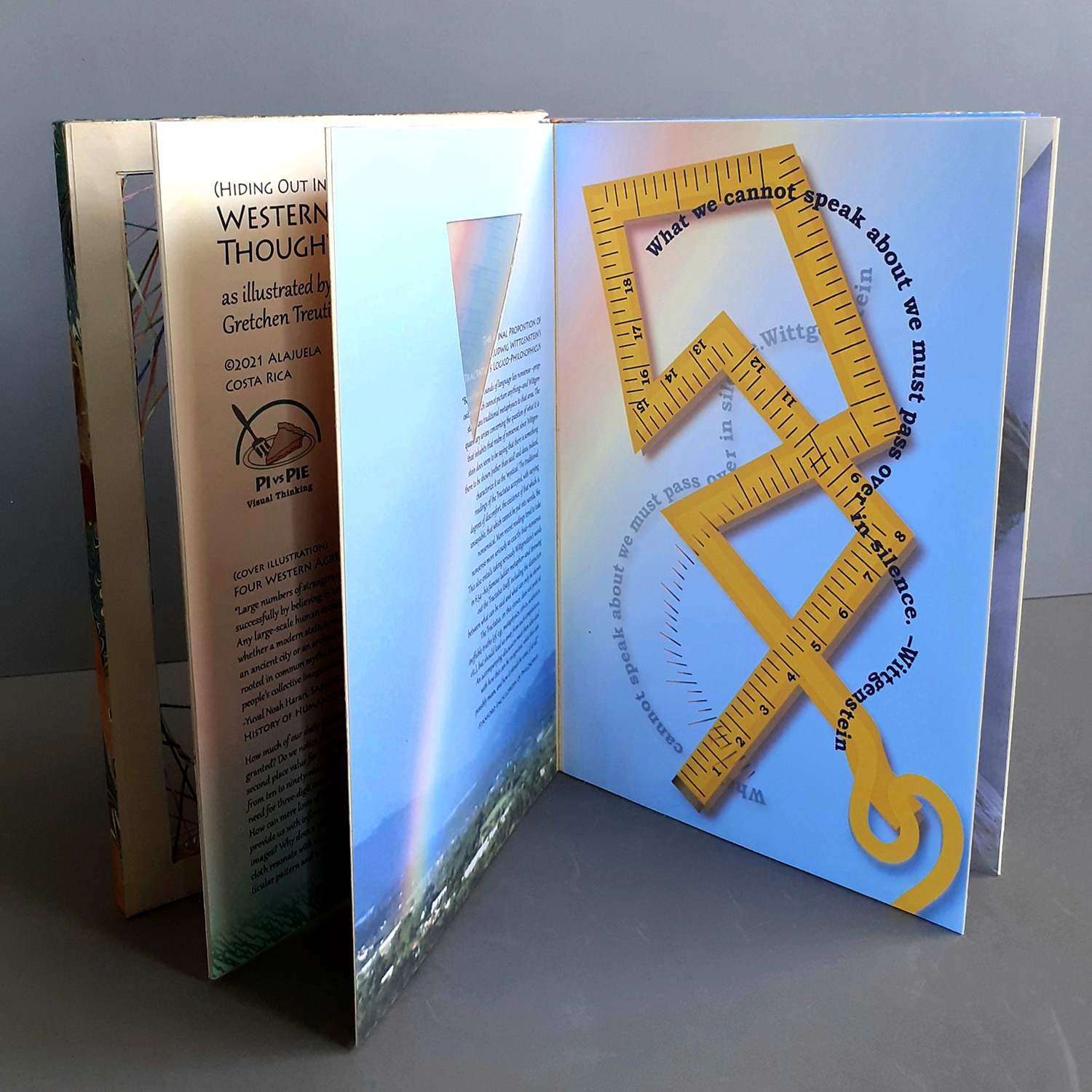
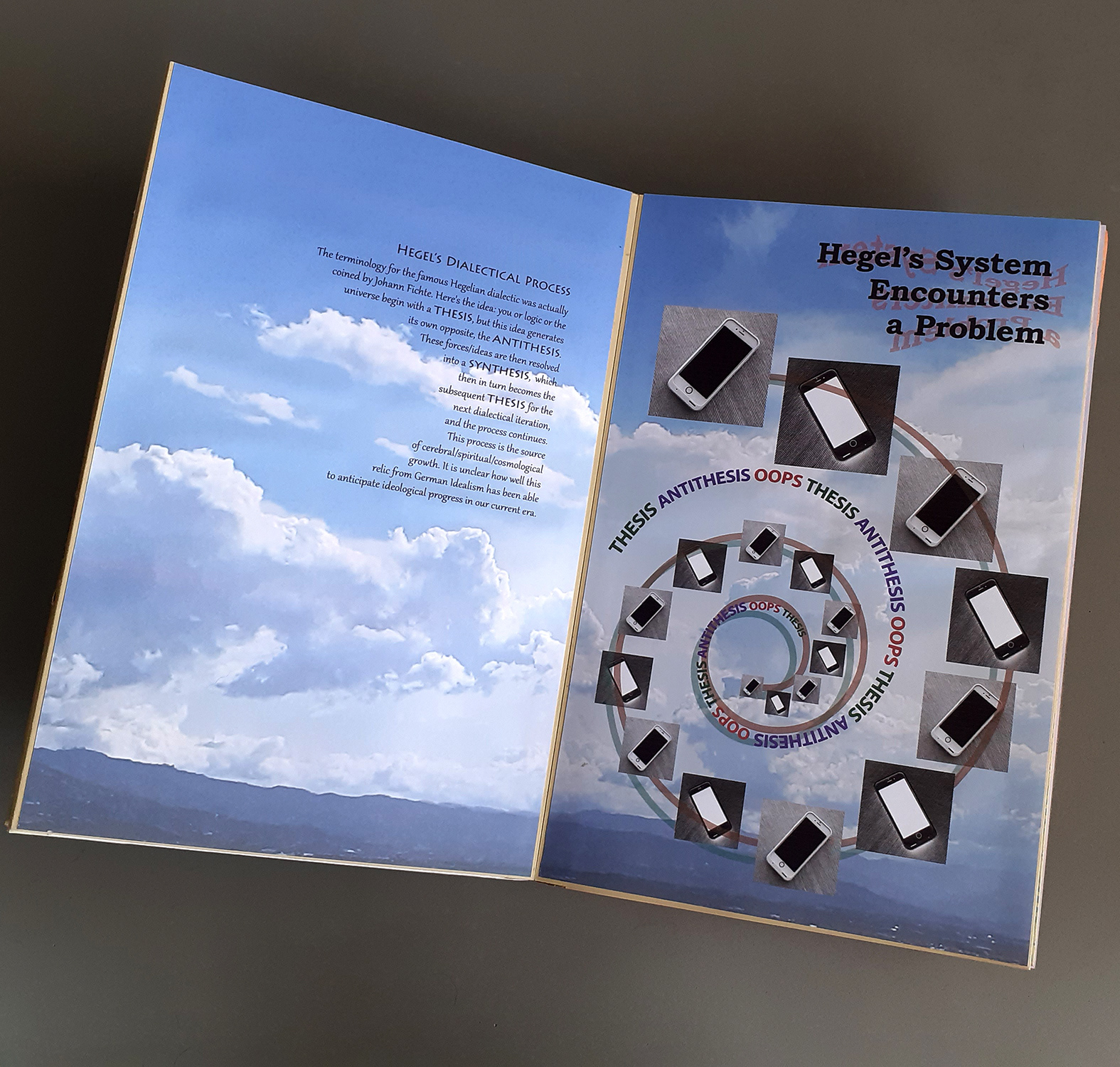
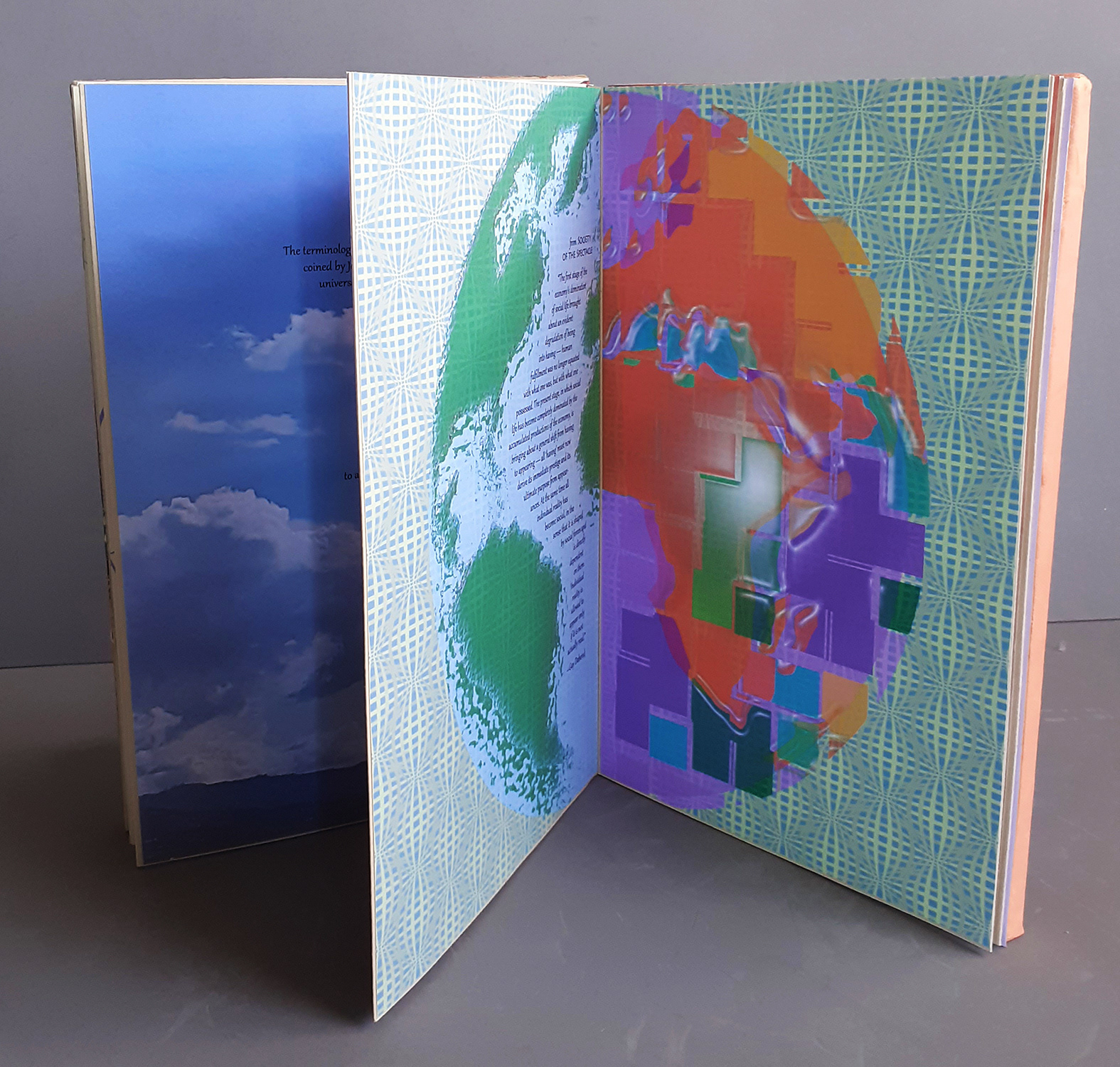
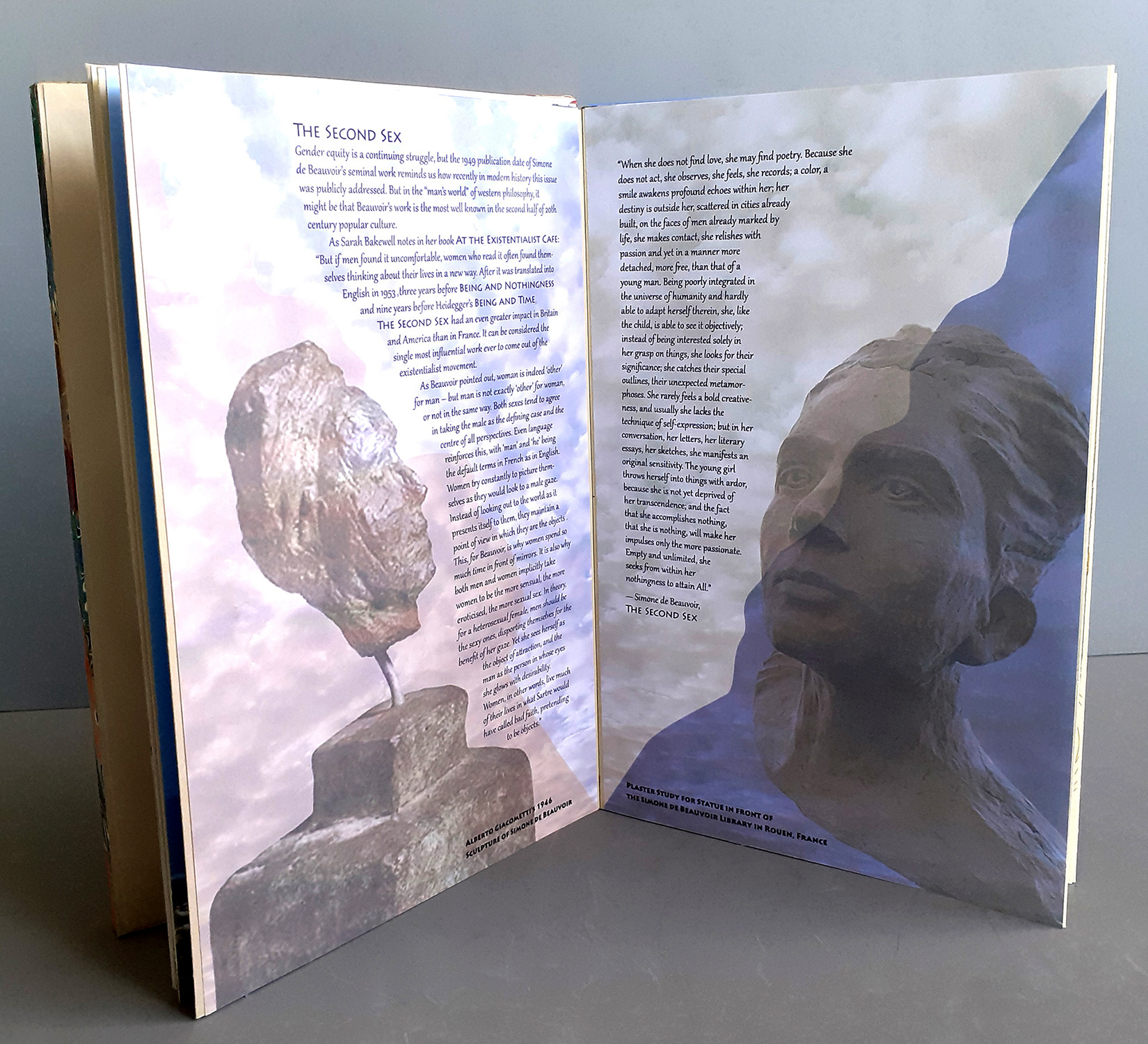
Hidden in Western Thought
It is the task of philosophers to explore what is hidden. Many Intro Philosophy courses begin with Plato’s Cave: prisoners in a cave, unable to accept that the shadows on the cave walls are only reflections of the true reality outside those walls. This book contains humorous “snapshots” of Western thinkers searching below appearance. It begins with some building blocks of western civilization including the alphabet, a nearly subliminal tool. The book “Sapiens” argues most human life is based on the “imagined,” what humans agree on (government, economics, religion, etc.). These may feel natural but they are really collective fictions, imaginary orders.
8 by 12 inches.
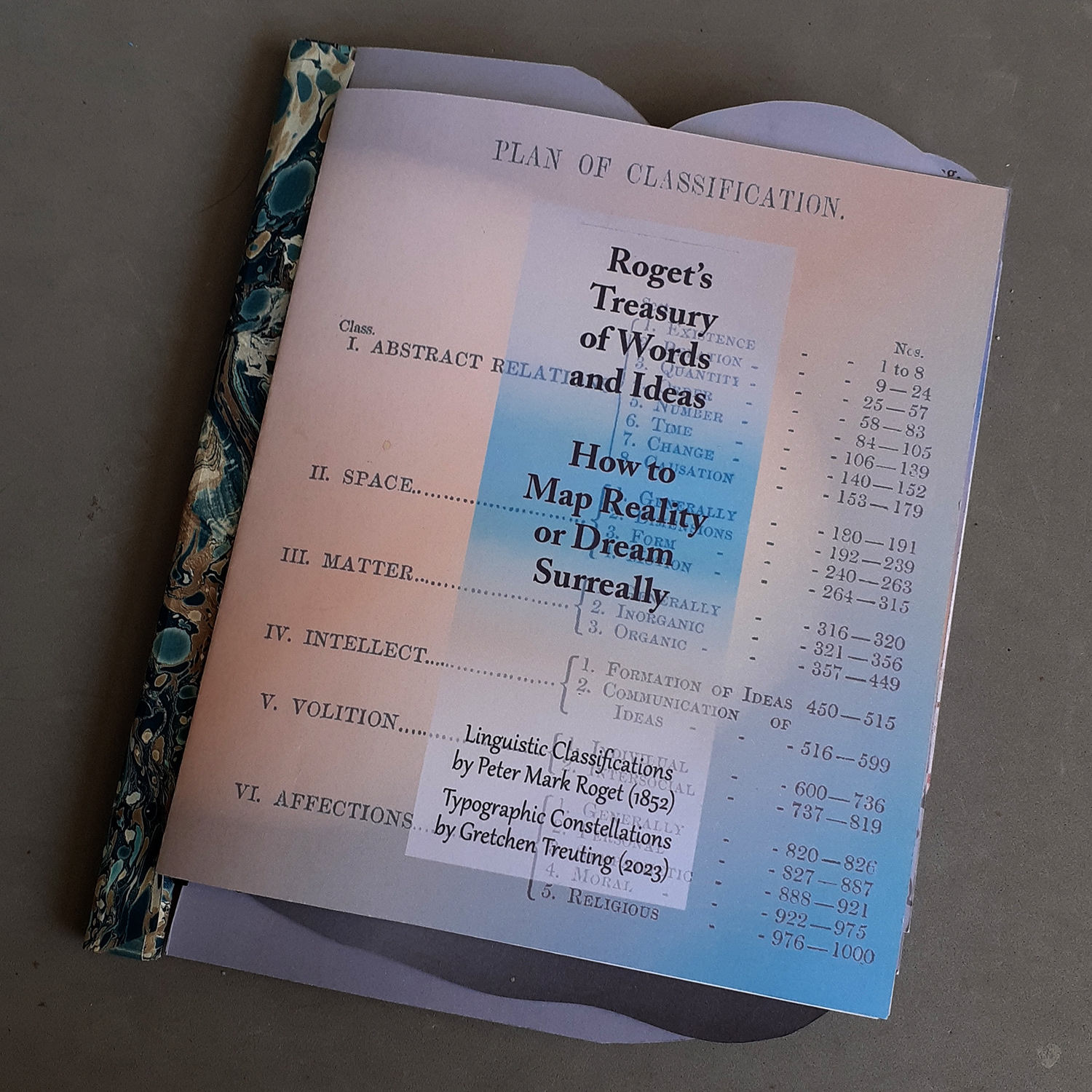
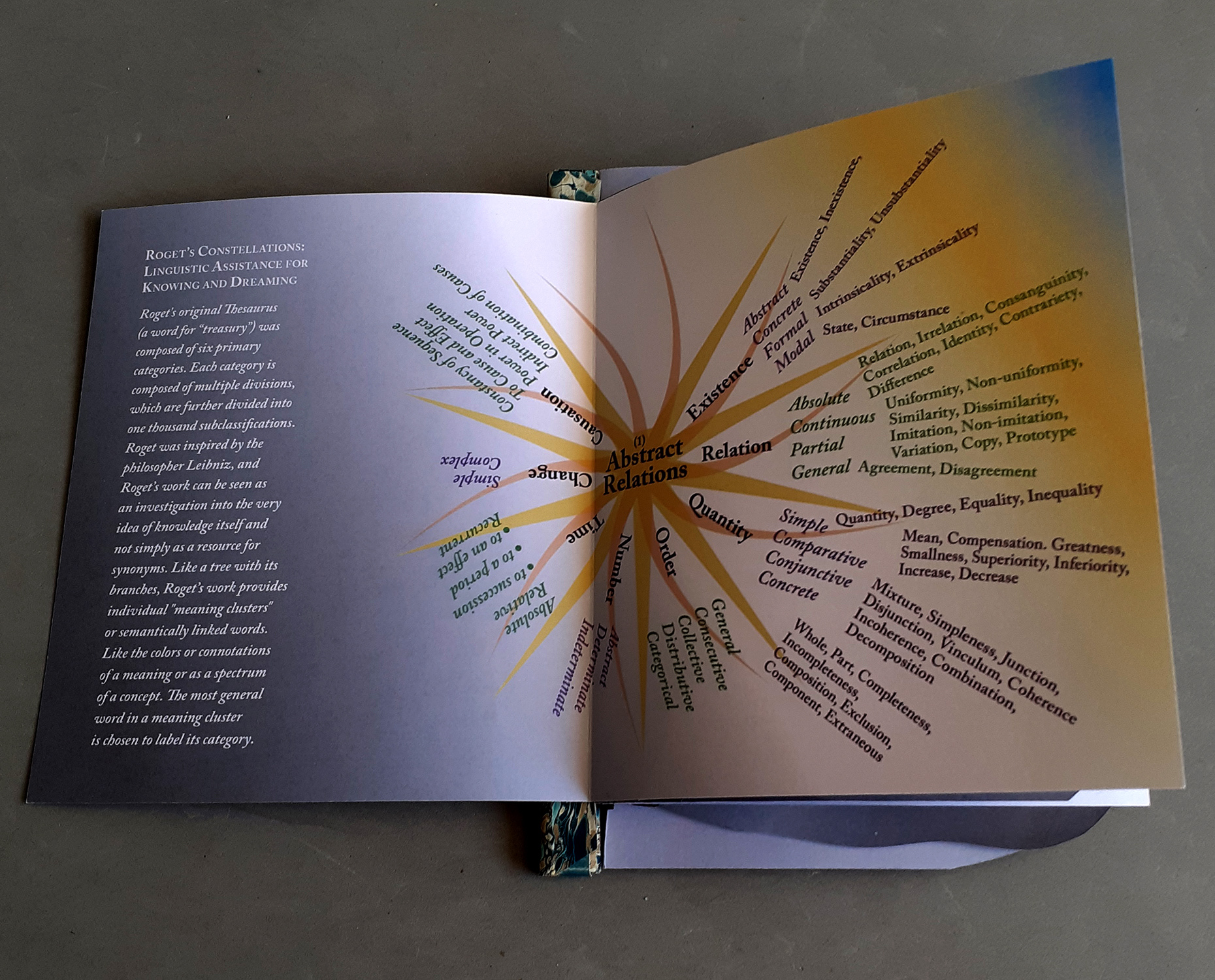
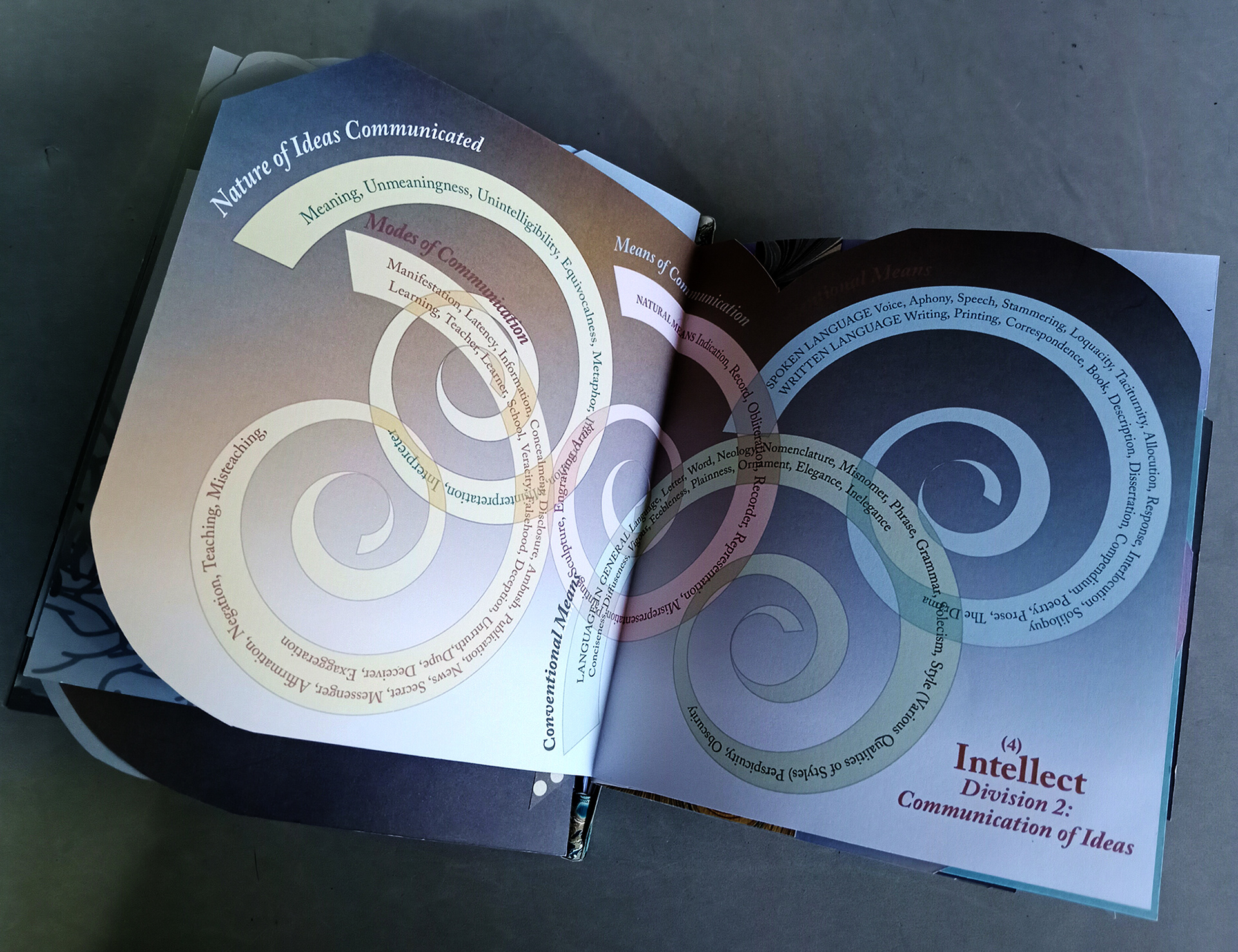
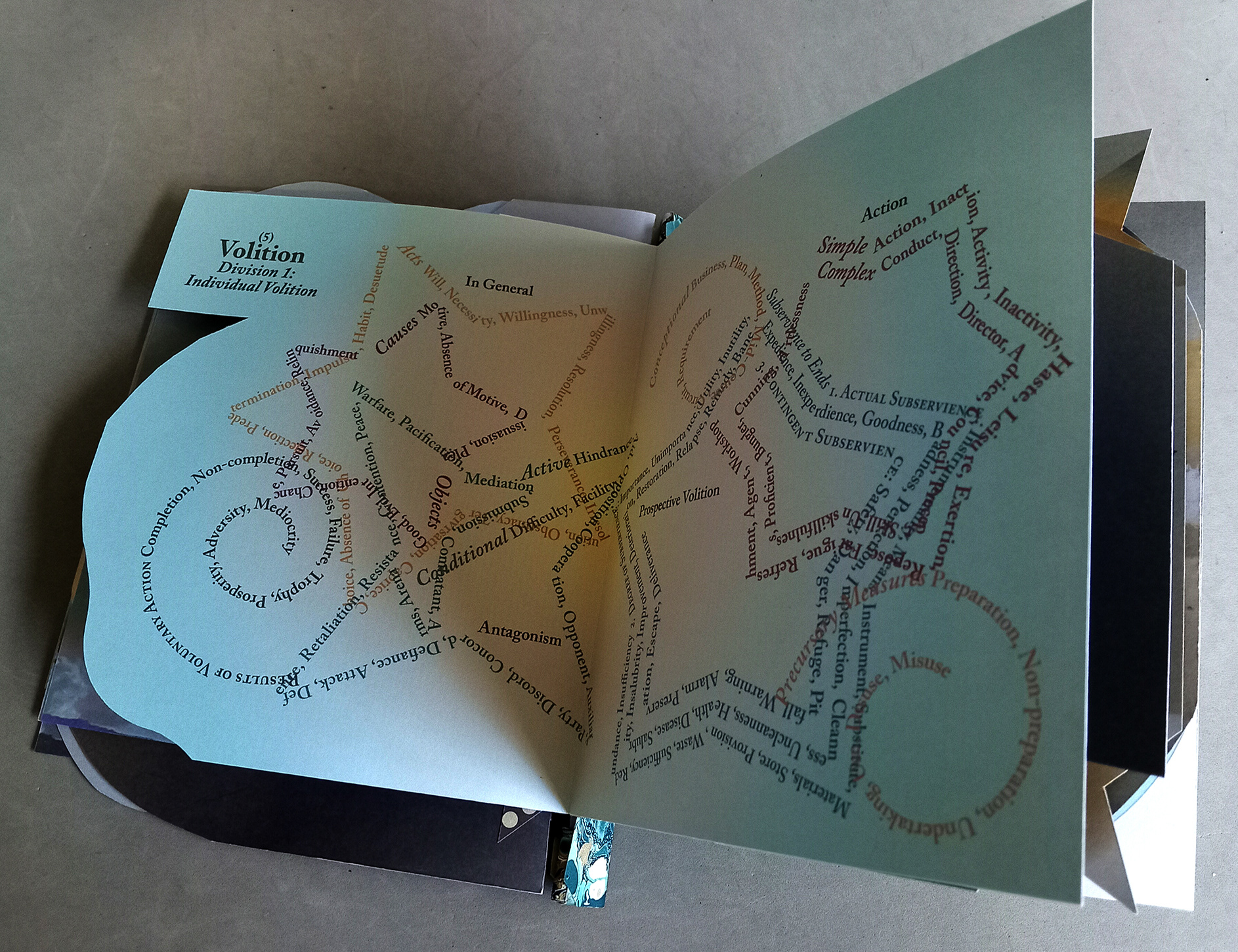
Linguistic Constellations
Roget’s collection of words and phrases is more than a tool for finding synonyms. Roget's original thesaurus (a word for “treasury”) was composed of six primary categories. Each category is composed of multiple divisions, which are further divided into one thousand sub-classifications. Roget was inspired by the philosopher Leibniz, and Roget’s work can be seen as an investigation into the very idea of knowledge itself. Like a tree with its branches, Roget’s work provides individual "meaning clusters" or semantically linked words. Like the colors or connotations of a meaning or as a spectrum of a concept.
7 by 8 inches.
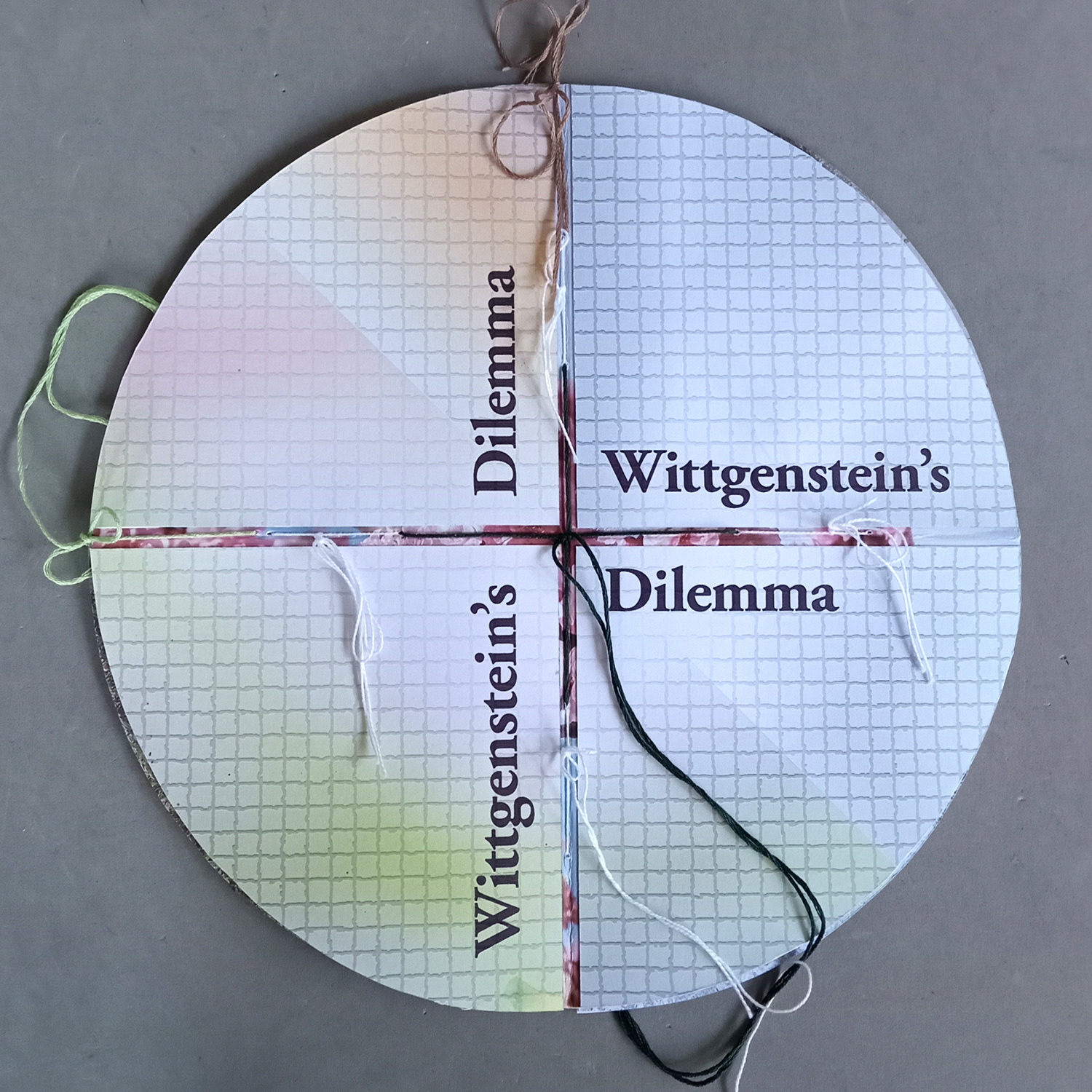




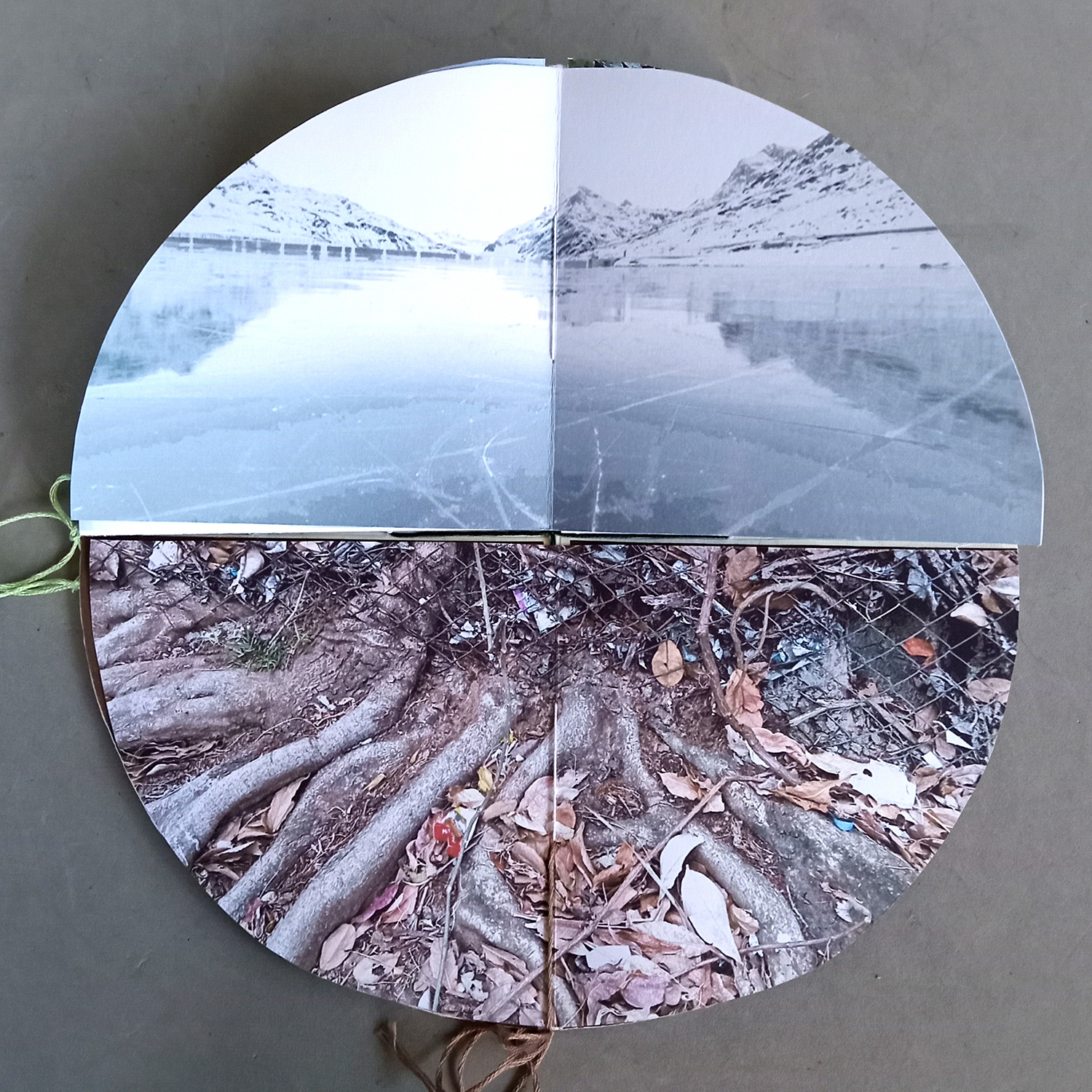
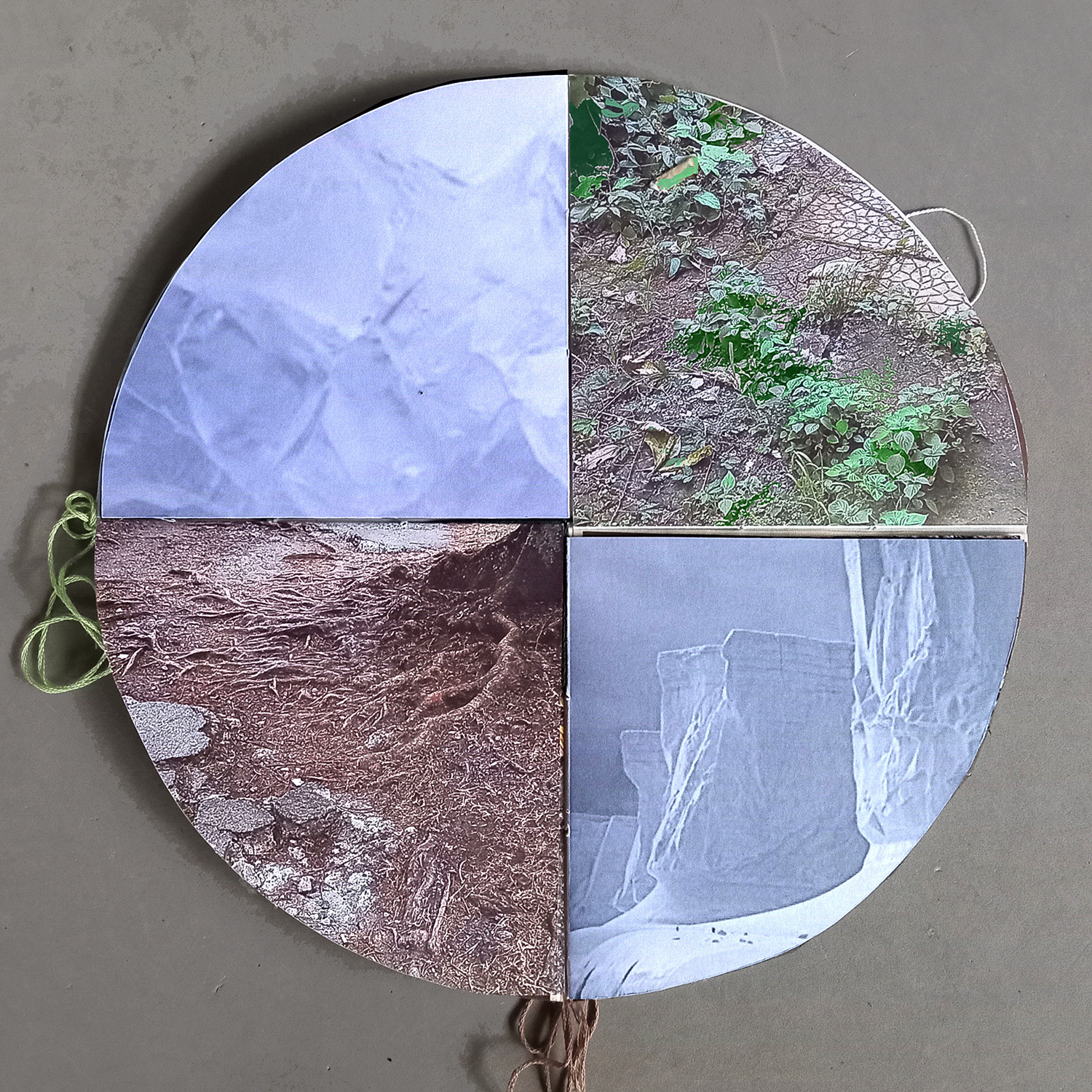
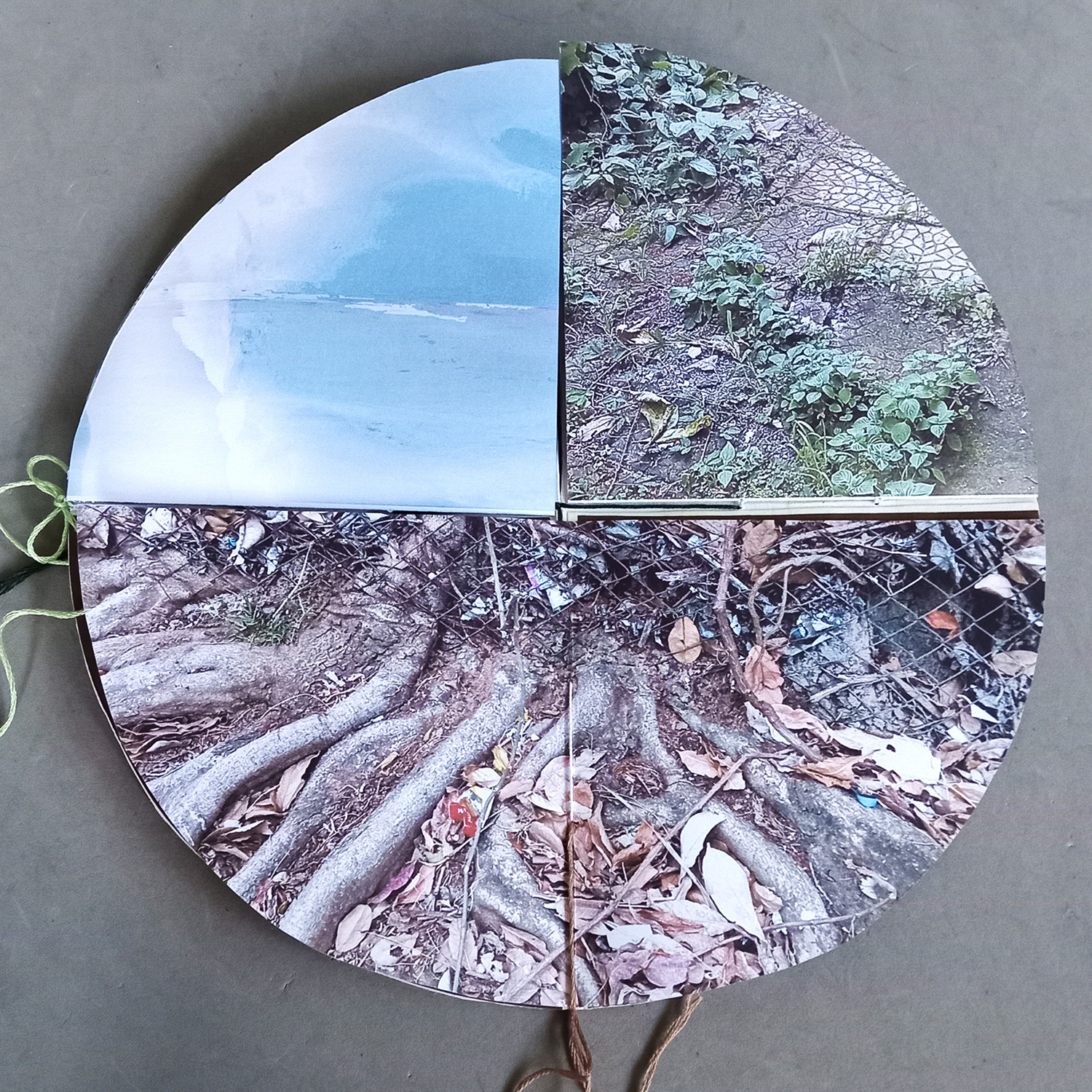
Wittgenstein's Dilemma
The text is from the 1993 film "Wittgenstein." Directed by Derek Jarman; screenplay by Jarman, Terry Eagleton, Ken Butler. Earthly photos are the ground where I live; ice images are from Google searches. It imagines that the philosopher has been able to reduce the world to pure logic (represented by ice). But this world has no friction, so he cannot walk on it. He then understands that the world requires roughness and ambiguity.
Gretchen Treuting ©2025
